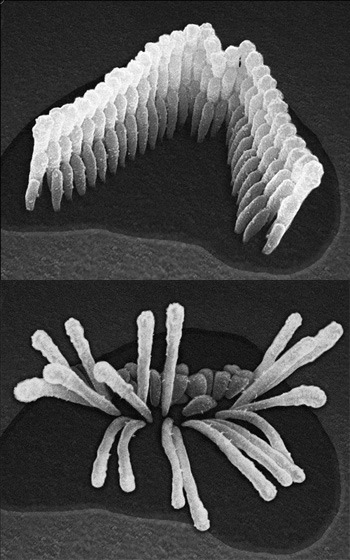9-30-15: SOUND IS VIBRATIONS, and vibrations that are too loud, too often and for too long can affect our physiology by damaging our hearing.
We began class singing our DM song. I reviewed the Solfa scale (we sang it “up and down the mountain”–an ascending and descending scale) without handsigns, since I haven’t taught those yet. I put the pages up on the white board showing the colored notes going up and down (SONG SEEDS ASCENDING SCALE PDF; SONG SEEDS DESCENDING SCALE PDF). I pointed to each note as we sang. I taught them the handsign for Do, and we practiced it a few times.
We reviewed what sound is (“Sound is vibrations that travel to my ear that send a message to my brain to tell me what I hear”). They remember so well! We chanted it a few times to solidify their recall.
Then we spent the bulk of the lesson exploring vibrations and waves. I brought in three rubber bands that I stretched over a bread pan. We plucked them and saw how they vibrated. I reviewed that the vibrating rubber bands move the air molecules around them causing waves in the air, and these sound waves travel to our ears. Those sound waves travel kind of like waves in the water (when you drop a pebble in). I used a Slinky toy to show the idea of waves traveling through air. I pushed one end of the Slinky (that I was holding in the air) to see how they travel to the other side.
I took a large stock pot I had brought with me and stretched some plastic wrap across the top. I taped it on the sides so the plastic was taught. Next, I poured some little sprinkles onto the plastic. Then I took a wooden spoon and a large metal pizza pan and banged the pan. I did not let the pan touch the stock pot and pointed that out to the children, but had it close to the pan. The sprinkles “danced” on top of the plastic wrap, demonstrating how we cannot see the air molecules moving because our eyes aren’t able to see that small without magnification, but they still are there. I banged the pan for a minute and had them dance like sprinkles. They love that.
I told them that air molecules and sound waves are like the wind. We don’t see the wind, but we know when it is there, because we can feel it, and hear it, and see the affects of its presence. I sometimes share this poem by Christina Rosetti (1830–1894) called “Who has seen the wind?”:

After these demonstrations, I explained how the little tiny cells in our inner ear , that are kind of like grass, can get ruined if we listen to sounds that are too loud too often or for too long. It’s kind of like trambling a path in grass when we walk over it continuously on the same spot. I encouraged them to be careful when they listen to music with earbuds/headphones on, to not have the volume too loud so that they don’t lose any of their hearing. (For more data on why and how hearing loss happens, go to the Dangerous Decibels website.)
At the end of the lesson, I taught them the song, “My Grandma Has a Green Thumb.” They love this song! It is just right for fall.
In closing, we sang our goodbye song.